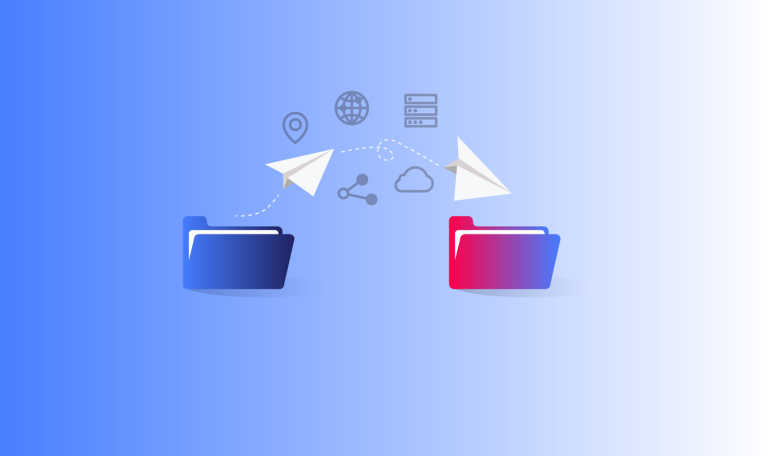How To Adapt Your Application In An Everchanging Online Environment

In today’s digital world, it can not feel easy to keep up with the constantly shifting landscape of technology. With changes like increased customer expectations and new regulations, your application must evolve into an efficient and secure system that can scale as needed — a challenge for any organization. However, by fully integrating modern tools, strategies, and practices, you can develop an application that can grow with user demands while maintaining high-performance levels. In this blog post, we’ll look at how to adapt your existing applications for ever-changing online environments so you can stay ahead of opportunities and improve outcomes.
Table of Contents
Utilize Existing Technology to Update Your Application
Utilizing existing technology can help you achieve that goal quickly, efficiently, and with fewer headaches. Gone are the days of spending endless hours coding and testing to make small updates. With streamlined tools and programming languages, you can implement changes seamlessly, keeping your app running smoothly and your users satisfied.
Whether you’re fine-tuning features or fixing bugs, utilizing already available technology can help you get the job done easily. Plus, with Kubernetes, you get to adhere to applicable regulations and compliance challenges with updating applications. With proper configuration, you can ensure your application remains secure and reliable.
Establish a Clear User Experience Strategy
Providing an exceptional user experience is essential in today’s digital world. Your strategy should include customer research to understand what your users need and expect from the application. Knowing who your audience is will help you determine which features are necessary and any changes to the user interface.
You can also use data collected from customer surveys to create a better app experience for them. As you gather information, it’s important to analyze user feedback and identify areas of improvement. This will ensure your application meets customer demands and provides an enjoyable experience.
Implement Automated Testing Practices
You must regularly test the application’s functionality to ensure it works as expected. Manual testing can be time-consuming and tedious, so consider investing in an automated tool. Automation will help you easily detect bugs and glitches in the development process, saving you time and resources while preventing issues from appearing in production.
Automated testing also allows for faster iteration cycles, as it helps you quickly identify any errors and needs for improvement. Automation also ensures consistent performance throughout the user experience, whether on the web or mobile apps.
Take Advantage of Cloud-Based Services
The ability to handle large amounts of data and traffic is crucial to the success of any application. Whether launching a new product or growing an existing one, you want to ensure your application can keep up with demand. That’s where cloud-based services come in.
By leveraging the power of the cloud, you can easily scale your infrastructure to meet the needs of your users without having to worry about costly hardware upgrades. Cloud-based services provide the flexibility and scalability that your business needs to stay competitive in today’s fast-paced environment.
Invest in User Experience Design Principles
In today’s digital age, user experience (UX) should be at the core of every app development strategy. By investing in UX design principles, you can optimize engagement levels on your application and ensure users have a positive experience. Research has shown that over 90% of users abandon an app after it crashes or works poorly.
So, creating a user-friendly interface that is easy to navigate and provides a seamless connection between the user and the app is essential. By focusing on UX design, you can improve app performance, user engagement and drive business growth. Remember to underestimate the power of UX design and invest in your app’s long-term success by prioritizing user experience.
Leverage Analytics and Data Visualizations
The analytics capabilities of modern applications are vast, and understanding how users interact with your application can provide invaluable insights. By leveraging data analytics and visualizations, you can track user behavior, identify areas of improvement and optimize the app to increase engagement levels.
Analytics also helps you monitor performance, detect any abnormal activities on the application and quickly respond to any issues. For example, you can detect any performance issues or security threats in real-time with the help of analytics tools. Some of the best analytical tools include Splunk, Datadog, and New Relic. These provide comprehensive insights into your application’s performance and help you identify any areas of improvement.
Strengthen Your Security Measures
Strengthening security measures is essential to protect your application and users from malicious attacks. With the right security protocols, you can ensure user data remains confidential and that no unauthorized access is possible. This involves implementing robust authentication methods such as two-factor (2FA) or strong passwords.
You should also conduct regular security assessments to detect any vulnerabilities within the application and take appropriate measures to fix them. The best way to ensure your application remains secure is to keep up with the latest security trends and technologies. For instance, you can leverage AI-powered tools to detect and respond to potential threats automatically. Finally, consider investing in a quality firewall and antivirus software to protect your application from malicious threats.
Monitor Performance Regularly
It’s important to regularly monitor the performance of your application to ensure it runs smoothly and efficiently. This includes testing the loading times, analyzing user behavior, and tracking crashes or errors. You can use various tools to track how users interact with your app and identify any improvement areas.
One of the best tools for monitoring performance is application performance management (APM). This platform allows you to monitor your application’s health and detect real-time errors or bottlenecks. With APM, you can also identify areas of improvement and make necessary changes quickly, resulting in a better user experience overall.
By monitoring performance, you’ll be able to quickly detect any issues and address them before they become serious problems. This will help you ensure your users have a positive experience and keep them returning for more.
Investing in the right strategies can create a successful app that meets customer demands and drives business growth. From leveraging automated tools to strengthening security measures, these tips will help ensure your application runs smoothly and efficiently. Developing a successful application requires time, energy, and resources, but the rewards are worth it. With the right strategies, you can create an app that stands out from the competition and drives user engagement.







